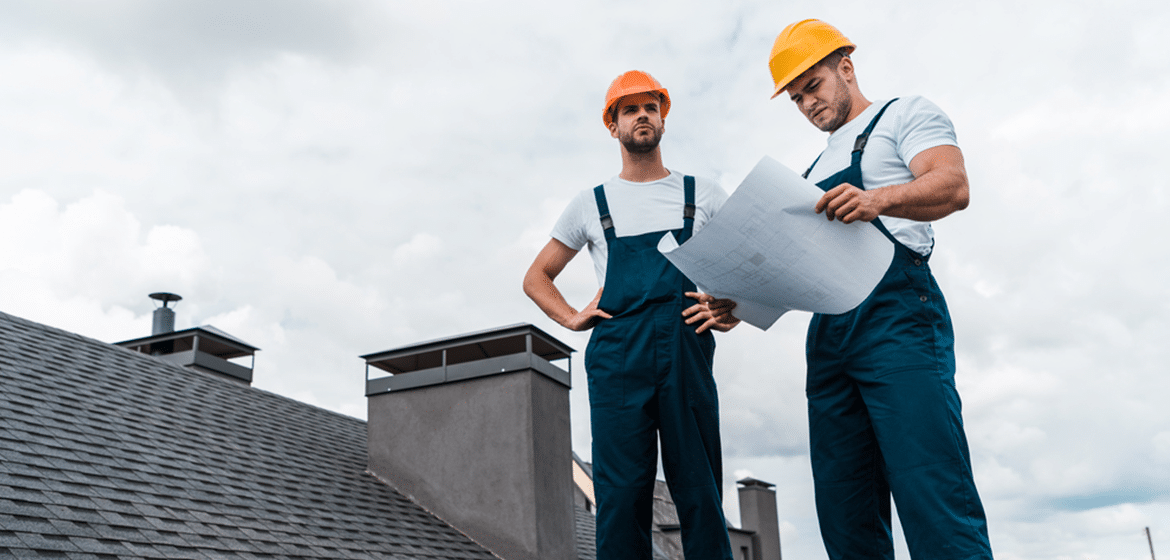
When you’ve just had a new roof installed, you might think the hard work is over. However, ensuring the longevity and performance of your new roof involves a crucial next step: a roof inspection after installation.
This inspection can help catch any potential issues early and confirm that your new roof is installed correctly and ready to protect your home for years to come.
Why is a Roof Inspection Important After Installation?
A roof inspection after installation is essential for several reasons. Firstly, it ensures that the roofing materials and workmanship meet the required standards. Even the most reputable roofing contractors can sometimes miss small details that could lead to bigger problems later. An inspection can identify and rectify these issues before they cause significant damage.
- Identifying Installation Errors Early
One of the main purposes of a roof inspection is to identify any errors made during the installation process. These can include improperly aligned shingles, insufficient flashing, or inadequate sealing. Catching these errors early can prevent leaks, water damage, and costly repairs down the line. It also gives you peace of mind knowing that your roof has been installed to the highest standards.
- Verifying Quality of Materials Used
During the inspection, the quality of the materials used in your new roof will be verified. This includes checking the shingles, underlayment, flashing, and other components to ensure they are of high quality and are installed properly. Sometimes, even good materials can be compromised if not handled or installed correctly. An inspection helps ensure that everything is in optimal condition.
- Ensuring Compliance with Local Building Codes
Roofing projects must comply with local building codes and regulations. A post-installation inspection ensures that your new roof meets all these requirements. This is not only important for the safety and durability of your roof but also for legal and insurance purposes. Non-compliance can lead to fines and issues with your homeowner’s insurance policy.
- Detecting Potential Future Issues
A roof inspection after installation isn’t just about catching current problems; it’s also about anticipating future ones. Inspectors can identify areas that might cause issues in the future, such as weak spots that could develop into leaks or areas where debris is likely to accumulate and cause damage. Addressing these potential issues now can save you from more extensive repairs and maintenance later.
- Validating Your Warranty
Most roofing contractors offer warranties on their work, but these warranties often require that you maintain your roof and catch problems early. A roof inspection after installation can provide documentation that your roof was inspected and any issues were addressed promptly. This can be crucial if you need to make a warranty claim in the future.
What Does a Roof Inspection Entail?
Understanding what a roof inspection involves can help you appreciate its value. A thorough roof inspection typically includes:
- Visual Examination
The inspector will visually examine the entire roof, looking for obvious signs of damage or improper installation. This includes checking for missing or misaligned shingles, damaged flashing, and other visible issues.
- Checking for Proper Ventilation
Proper ventilation is crucial for the health of your roof and your home. The inspector will check that the roof has adequate ventilation to prevent moisture buildup and overheating, which can cause damage over time.
- Inspecting the Attic
An often-overlooked part of a roof inspection is checking the attic. The inspector will look for signs of leaks, proper insulation, and ventilation. Issues in the attic can often indicate problems with the roof itself.
- Testing for Water Tightness
The inspector may use specialized equipment to test for leaks and ensure that the roof is watertight. This is especially important in areas prone to heavy rainfall or snow.
- Reviewing the Installation
The inspector will review the overall installation process, checking that all components were installed correctly and according to manufacturer specifications and building codes. This includes examining the flashing, underlayment, and other integral parts of the roofing system.
Benefits of Professional Roof Inspection
Opting for a professional roof inspection after installation comes with several benefits. Professionals have the expertise and experience to identify even the smallest issues that a layperson might miss. They also have access to specialized tools and equipment that can provide a more thorough inspection.
Additionally, professional inspectors can offer valuable advice on maintaining your new roof, helping you extend its lifespan, and maximizing your investment. They can also provide you with a detailed report, which can be useful for insurance purposes and future maintenance planning.
How Often Should You Schedule Roof Inspections?
While a roof inspection after installation is crucial, it shouldn’t be a one-time event. Regular roof inspections are key to maintaining the integrity of your roof. The National Roofing Contractors Association recommends having your roof inspected at least twice a year, typically in the spring and fall.
This regular maintenance helps catch seasonal damage from winter snow or summer storms and ensures that minor issues don’t escalate into major problems.
The Role of Weather in Post-Installation Inspections
Weather plays a significant role in the condition of your roof. After a new installation, your roof may face its first major weather test, whether it’s heavy rain, snow, or high winds. A post-installation inspection can verify that the roof withstands these elements effectively.
Additionally, severe weather events can sometimes cause immediate but not always visible damage. An inspection after such events can uncover any hidden issues that need prompt attention.
Common Issues Found in Post-Installation Inspections
During a post-installation inspection, several common issues might be uncovered, including:
- Loose or Missing Shingles: Even new roofs can have shingles that were not secured properly, leading to potential leaks.
- Improper Flashing: Flashing around chimneys, vents, and skylights must be installed correctly to prevent water infiltration. Improper flashing is a common issue found during inspections.
- Ventilation Problems: Proper attic ventilation is crucial to prevent moisture buildup and extend the roof’s lifespan. Inadequate ventilation can lead to mold growth and structural damage.
- Gutter and Downspout Issues: Ensuring that gutters and downspouts are installed correctly and functioning well is essential to direct water away from the roof and foundation.
The Cost of Skipping Post-Installation Inspections
Neglecting a roof inspection after installation can lead to costly consequences. Small issues that could have been easily fixed can develop into major repairs or even require a full roof replacement if left unaddressed. Moreover, many roofing warranties require regular inspections and maintenance to remain valid. Skipping inspections could void your warranty, leaving you responsible for repair costs that would otherwise have been covered.
For expert roofing services and thorough roof inspections, trust us at Dane Roofing. We are dedicated to ensuring your roof is in optimal condition and ready to protect your home.
Contact us today to schedule your roof inspection and experience the high-quality service and care we are known for. Let us help you maintain the integrity of your roof and provide the security you deserve.

